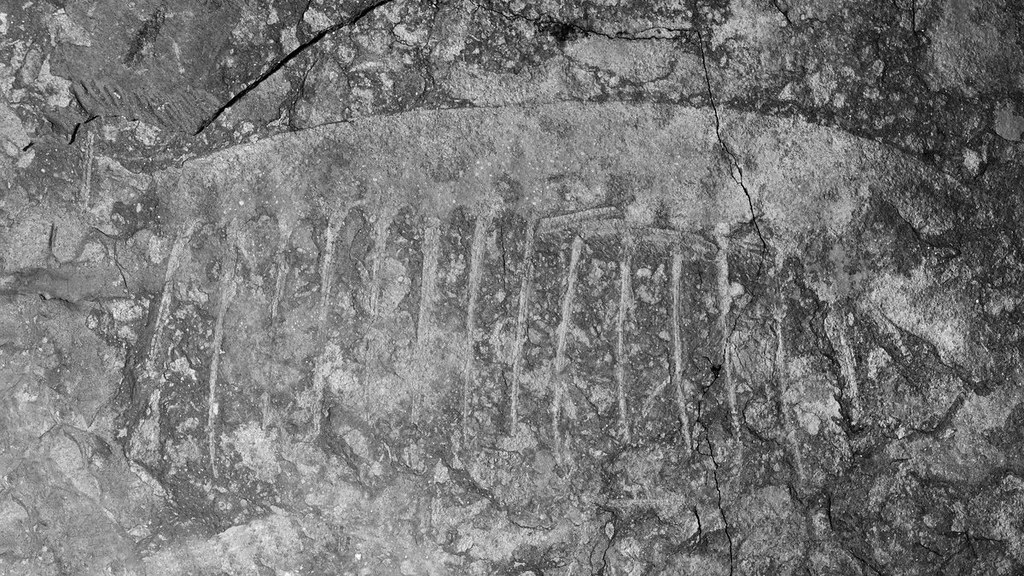The study, co-authored by Dr Nick Longrich from our Department of Biology & Biochemistry, was published today in the prestigious journal Nature.
Newly discovered fossils from North Greenland show how the strange species, called Tamisiocaris, used these huge, specialised appendages to filter plankton, similar to the way modern blue whales feed today.
The animals lived 520 million years ago during the Early Cambrian, a period known as the 'Cambrian Explosion' in which all the major animal groups and complex ecosystems suddenly appeared.
Tamisiocaris belongs to a group of animals called anomalocarids, a type of early arthropod that included the largest and some of the most iconic animals of the Cambrian period. They swam using flaps down either side of the body and had large appendages in front of their mouths that they most likely used to capture larger prey, such as trilobites.
However, the newly discovered fossils show that those predators also evolved into suspension feeders, their grasping appendages morphing into a filtering apparatus that could be swept like a net through the water, trapping small crustaceans and other organisms as small as half a millimetre in size.
The research, funded by the Agouron Institute, Carlsberg Foundation and Geocenter Denmark, was led by the University of Bristol and also included researchers at the University of Bath, Durham University and the University of Copenhagen.
“We once thought that anomalocarids were a weird, failed experiment,” said co-author Dr Nick Longrich from the University of Bath's Department of Biology & Biochemistry. “Now we’re finding that they pulled off a major evolutionary explosion, doing everything from acting as top predators to feeding on tiny plankton.”
Study lead author Dr Jakob Vinther, a lecturer in macroevolution at the University of Bristol, said: “These primitive arthropods were, ecologically speaking, the sharks and whales of the Cambrian era. In both sharks and whales, some species evolved into suspension feeders and became gigantic, slow-moving animals that in turn fed on the smallest animals in the water.”
As well as shedding light on the evolution of the Tamisiocaris, the discovery also helps highlight just how productive the Cambrian period was, showing how vastly different species of anomalocarids evolved at that time, and provides further insight into the ecosystems that existed hundreds of millions of years ago.
The Tamisiocaris fossils were discovered during a series of recent expeditions led by co-author David Harper, a professor at Durham University.
“The expeditions have unearthed a real treasure trove of new fossils in one of the remotest parts of the planet, and there are many new fossil animals still waiting to be described,” he said. “Our new understanding of this remarkable animal adds another piece to a fascinating jigsaw puzzle.”
In order to fully understand how an anomalocarid could have fed, Dr Martin Stein from the University of Copenhagen, Denmark, created a 3D computer animation of the feeding appendage to explore the range of movements it could have made.
Dr Stein said: “Tamisiocaris would have been a sweep net feeder, collecting particles in the fine mesh formed when it curled its appendage up against its mouth.
“This is a rare instance when you can actually say something concrete about the feeding ecology of these types of ancient creatures with some confidence.”
Video by Nature about the research.
If you enjoyed this, you might also like:
Bird mating behaviour influenced by sex ratios, March 2014
Making waves in water research, March 2014
Dissecting brain related issues, March 2014

